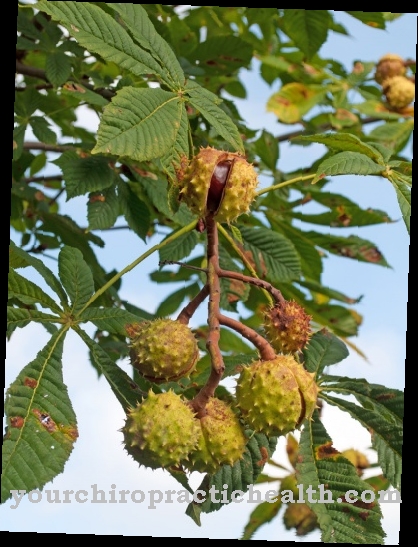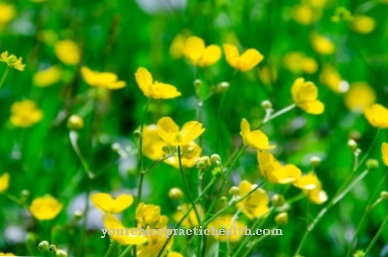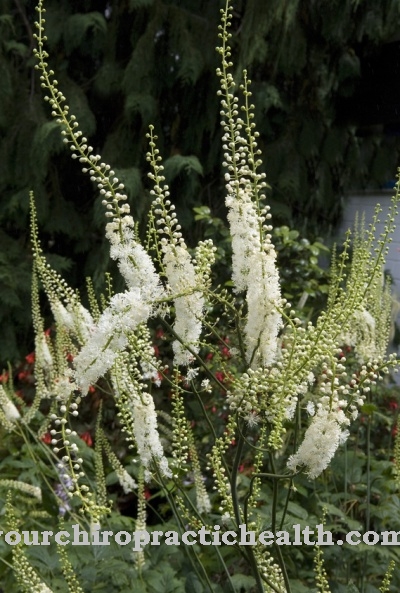The Bärwurz belongs to the old European medicinal plants. Today, however, the herb is hardly known.
Occurrence and cultivation of Bärwurz
In the Bärwurz (Meum athamanticum) is the only representative of the genus Meum. It is part of the umbelliferae family (Apiaceae). The medicinal plant reaches a height of between 15 and 60 centimeters and a width of about 30 centimeters. It has a hardy rhizome and a hollow plant stem.The rhizome is also equipped with a tuft of fibers, while the leaves are finely pinnate. The Bärwurz is one of the perennial herbaceous plants. They bloom in May and June. One of the typical characteristics of the medicinal plant is its strong odor, which can be perceived even when dried. In autumn, the yellowish-white bearwort flowers give way to seeds, which are around seven millimeters long.
The home of Bärwurz can be found in Western and Central Europe. The range of the plant can, however, extend to Bulgaria as well as to southern Italian Calabria. Specimens of bearwort can even be found in Morocco. Preferred locations for the medicinal plant are scree slopes, pasture lawns and stony areas below Krummholz.
Effect & application
The ingredients of bearwort include essential oils, phthalides, monoterpenes, resin, fats, ligustilide, caffeic acid, sugar, starch and gum. Bearwort is not only used as a medicinal plant, but also in the kitchen, where it is used as a herb. The roots and the dill-like leaves create a hearty taste.
Bärwurz schnapps is also very popular in Bavaria. The fresh leaves of the plant are served like parsley in the kitchen. They have the ability to stimulate the appetite and aid digestion. Bärwurz can be administered in various ways for medicinal purposes. The leaves can be squeezed and applied to the affected areas as compresses for gout complaints or skin diseases.
Internal use as a tea is also possible. A teaspoon of dried leaves is poured over 250 milliliters of boiling water. The tea takes about ten minutes to steep. After straining, the preparation can be consumed. The tea is considered effective for digestive complaints.
In addition to the tea, 250 milliliters of boiled water can also be poured over the bearwort seeds. Before straining, they have to brew for around 20 minutes. The seeds are suitable for the treatment of bladder problems, migraines and loss of appetite. Further dosage forms of Bärwurz are a decoction of the roots and a tincture.
You can also make the tincture yourself. For this purpose, the user fills the roots of the plant into a screw-top jar. Then he pours over the contents with alcohol or double grain. When all parts of the plant are covered, he closes the mixture and lets it steep for a period of two to six weeks. The mixture is then strained into a dark bottle.
The tincture is then taken one to three times a day with ten to 50 drops. If the concentration of the tincture is too intense, it is possible to dilute it with water. In addition to internal use, the barwort tea can also be administered externally. This is done through ablutions, compresses, or baths.
Importance for health, treatment & prevention
As a medicinal plant, bearwort has largely been forgotten today. It can hardly be found in the herbal books of the present. The plant was already highly valued for this in ancient times. It was recommended by doctors such as Dioscorides in the 1st century and Galenus in the 2nd century AD to treat urinary retention, joint problems or hysteria.
In the medical work Physica, the universal scholar Hildegard von Bingen (1098-1179) also mentioned bearwort benevolently. The positive properties of the medicinal plant for gout and fever were praised. Even today, Hildegard medicine uses bearwort against fever and heart failure. The plant is also used in homeopathy. Conversely, conventional medicine does not attach any importance to bearwort.
Bärwurz was also mentioned in 1539 in Hieronymus Bock's (1498-1554) book of herbs. His student Jakob Dietrich (1522-1590), also called Tabernaemontanus, praised the plant as a component of the medieval antidote Theriak. Bärwurz was often grown in monastery gardens. Witch medicine used the plant as feverfew. It was also used for births. Dried bearwort was also used as fodder because the cattle avoided fresh specimens.
From the 19th century onwards, bearwort was used almost exclusively in veterinary medicine. Instead, the plant was increasingly used as a kitchen spice. In Bavaria, Bärwurz is still used today as a raw material to produce Bärwurz liqueur. This promotes digestion and strengthens the stomach. Folk remedy recommends barwort for the treatment of various diseases.
These include gas, loss of appetite, intestinal catarrh, problems with digestion, jaundice (jaundice), bladder disorders, heart failure, gout, poisoning, kidney disease, white flow and colic. Other indications include menstrual cramps, migraines, rashes on the skin, stress, age-related complaints and hysteria.
In addition, Bärwurz is said to have exfoliating, appetizing, stomach-strengthening, purifying, detoxifying, toning, diuretic and warming effects. In addition, the medicinal plant strengthens the heart and has a positive effect on female menstruation. A warning is given, however, against too high a dosage of bearwort. This can lead to a headache.



























